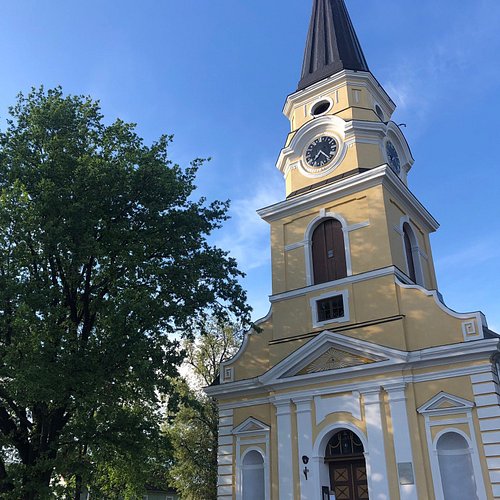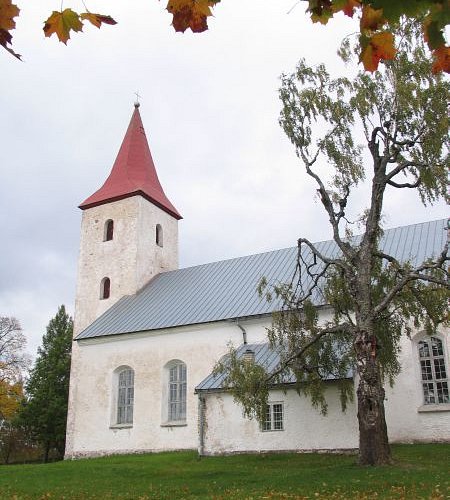10 Churches & Cathedrals in Voru County That You Shouldn't Miss
Discover the best top things to do in Voru County, Estonia including Church of St Catherine, Church of St Catherine (Ekaterina), Pindi Church, St. Mary's Church, Obinitsa Church, Plaani Orthodox Church, Misso Lutheran Church, Heimtali Peetri Kirik, Plaani Puha Nikolai kirik, EMK Ruusmae Kogudus.
Restaurants in Voru County
1. Church of St Catherine
2. Church of St Catherine (Ekaterina)
Overall Ratings
4.5 based on 5 reviews
Construction of the Church of St Catherine in Voru commenced in 1793 during the reign of Empress Catherine II. It is thought to have been designed by the Livonian architect Schons, while the man responsible for the building of the church was Voru's own Johann Karl Otto. The church was surrounded with a formidable fence. It is famous for its cross-shaped floor plan, substantial bell tower, high dome-like secondary tower and arched windows. Designed in classicist style, it was completed in 1804 in honour of St Catherine. The grounds around the church were restored in 2008 and are now home to an open air exhibition of religious text-themed illustrations by artist Marje Ernits.
3. Pindi Church
Overall Ratings
4.0 based on 1 reviews
Pindi Jaani (St. John's) church was built according to the plan by architect J. G. Muhlhausen. The church was consecrated in 1881. A massive tower stands In the western part of the rectangular church, the vestry is in the north-eastern part. The altarpiece is a copy of the one in Rouge church, "Jesus on the cross" by Rudolf von zur Muhlen. The new organ built by the brothers Kriisa was consecrated in 1903.The grave and monument of Captain Friedrich Vreeman (1894–1919), who was killed in the Estonian War of Independence, are in the church cemetery. Service is held Sundays at 10.30.Useful information: Laine Villenthal, who was the first woman ordained as a minister in Estonia, served in Pindi church until 2004.
4. St. Mary's Church
The first stone church was constructed in Rouge in the 16th century. In 1730, the original church, which was destroyed in the Great Northern War, was replaced with one which had an imposing square tower. The church was blessed in the name of St. Mary. The altar-piece "Christ on the cross" by R. von Muhlen is from 1854. In 1860 the walls were made higher and a mirrored arch was installed. In 1930 the church got a 31-register organ built by the Kriisa brothers. The first Estonian pastor in Rouge was Rudolf Gottfried Kallas.Useful information! You can attend mass at the church every Sunday at 11:00 and in summer, the church is used as a wayfarers' church. Entrance to the tower is for a fee (grown ups 1.50, children 1 and family ticket 3 euros).
5. Obinitsa Church
Construction of the Apostolic Orthodox school and church in Obinitsa began in 1897. It was eventually completed and blessed in 1904. Unique in the Baltic states, it was a two-storey building made of wood, with a bell tower. The church was closed in 1950, when it began to be used as a school. The new church in Obinitsa is on the road leading to Piusa, next to the cemetery. Construction was started in 1950 by local priest Vileomon Talomees, with everything done to obstruct it the following year - it was not supported by the deanery of Voru County, but was supported by the Bishopric of Estonia. It was eventually blessed upon its completion in 1952 by Bishop Roman of Tallinn.
6. Plaani Orthodox Church
Plaani Orthodox church dates from the times of the Tsarist conversions and symbolises one of the eras of the Christianising of Estonia. Consecrated in honour of St. Nicholas in 1874, the church was erected on land belonging to Plaani manor. It boasts five 'onion' domes and is a typical construction of stone and fired brick. It also has its own cemetery.Did you know...?*The church was used as a storehouse by the local collective farmers during the Soviet era*When the first Republic of Estonia was established, the Apostolic Orthodox Church in the country applied to found a monastery here




